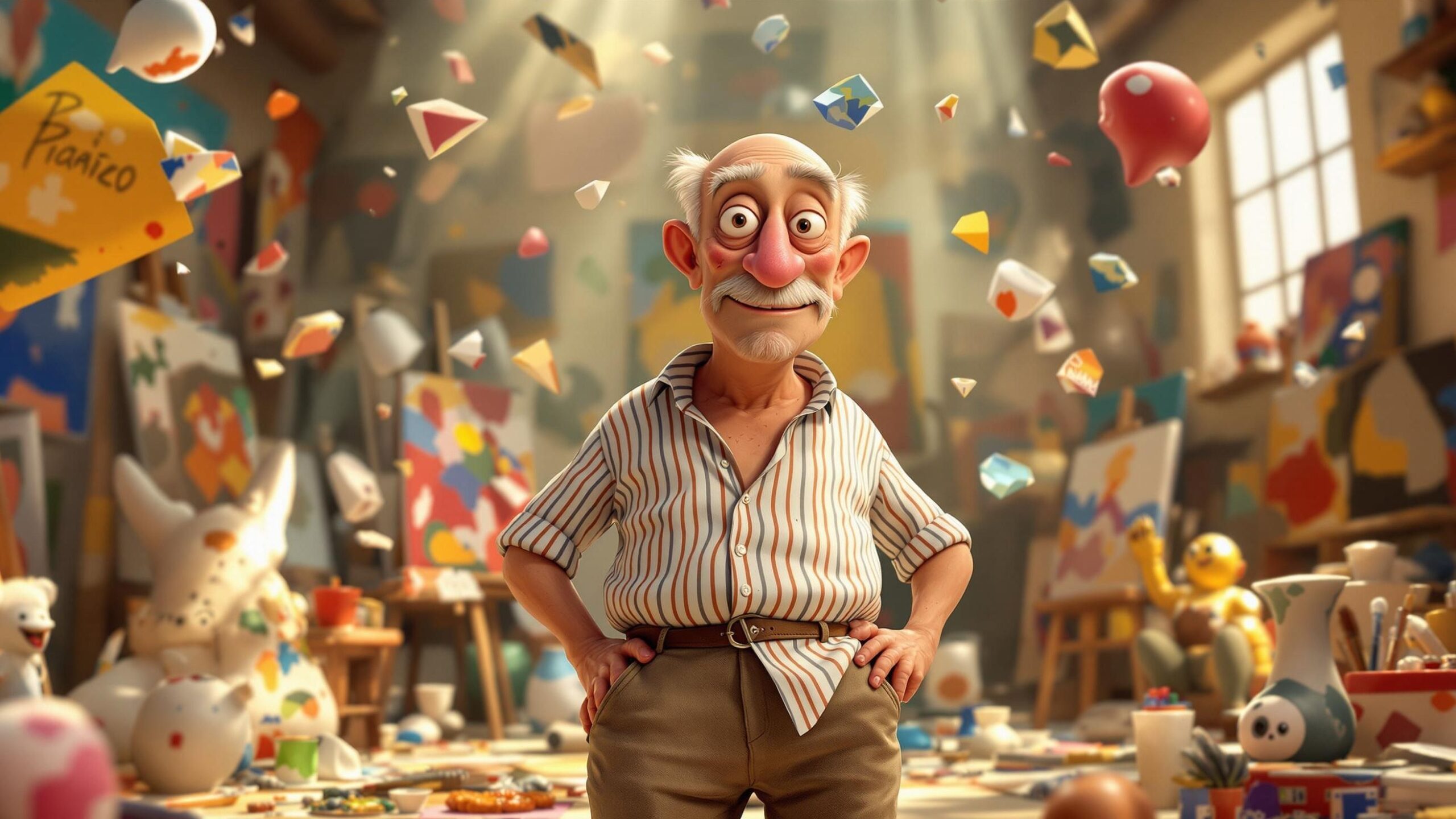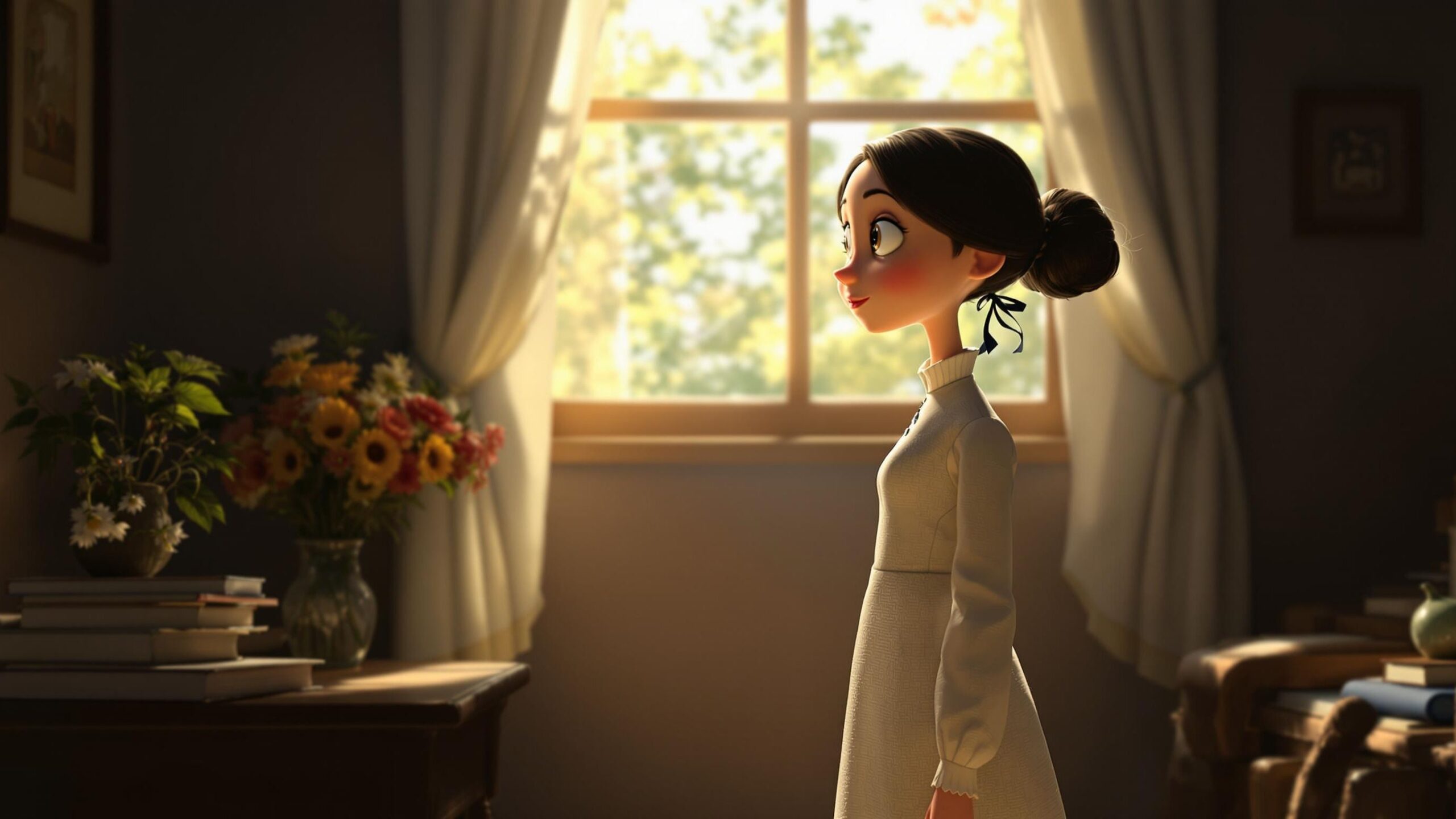Pablo Picasso didn’t wait for art to change—he changed it himself. A restless spirit with a sharp brush and an even sharper sense of vision, Picasso didn’t follow trends. He set them. Born in Spain in 1881 and creating well into his 90s, he went through more artistic phases than most painters dare to imagine, each one exploding with invention, emotion, and controversy. But of all the periods and styles Picasso played with, none shook the world quite like Cubism. Picasso didn’t just look at an object and paint it. He tore it apart—visually, intellectually, emotionally—and reassembled it in a way that forced people to see with new eyes. Faces became puzzles. Still lifes danced. Space twisted. And the rules? Those were made to be smashed. This is the story of the artist who flipped the canvas, cracked it open, and said: Look again.
From Prodigy to Rule-Breaker
Before he reinvented art, Picasso mastered it. At just seven years old, he was already drawing better than most adults. By the time he was a teenager, he was creating astonishingly lifelike portraits and navigating the rigors of classical training with ease. His father, an art teacher, recognized his son’s talent and, wisely, stepped back. By age 14, Picasso was outpacing his professors and sketching with the confidence of someone twice his age.
But Picasso didn’t want to stay a prodigy. He wasn’t interested in painting what the world looked like—he wanted to paint what it felt like. That rebellious streak carried him to Barcelona and then to Paris, where he immersed himself in the avant-garde circles of poets, thinkers, and dreamers. These were the artists who wanted to break away from dusty conventions and embrace something daring, strange, and new.
In Picasso’s hands, art became a kind of rebellion. The paintbrush wasn’t just a tool; it was a weapon for challenging norms, questioning beauty, and unveiling emotion in jagged, fractured ways.
The Blue Period: A Portrait of Sorrow
Before Cubism shattered shapes, Picasso’s Blue Period soaked everything in melancholy. From 1901 to 1904, his paintings turned moody and monochrome, awash in cool blue tones that reflected his own emotional struggles. He painted beggars, blind figures, and lonely souls, all with a haunting sense of vulnerability.
This was Picasso processing grief, particularly the death of his friend Carlos Casagemas. Through works like The Old Guitarist and La Vie, Picasso found a way to translate inner sorrow onto the canvas in a way that made the world pause. The figures were elongated, ghostlike, trapped in their sadness—and somehow, endlessly beautiful.
Even in this early stage, Picasso’s genius was evident. He wasn’t just capturing sadness; he was embodying it. And in doing so, he gave viewers something startlingly intimate: a raw emotional truth wrapped in cobalt hues and heavy silence.
Enter Cubism: A Visual Revolution
Then came Cubism—the earthquake. Around 1907, Picasso unveiled Les Demoiselles d’Avignon, a painting that looked like it had been dragged through a kaleidoscope and exploded back onto the canvas. Five women, inspired partly by African masks and Iberian sculpture, stare back at the viewer not with seduction but with bold defiance. Their bodies are angular, their faces jagged, their space distorted.
It was jarring. Critics called it ugly. Friends were confused. But Picasso didn’t flinch. Alongside Georges Braque, he went even deeper, developing Analytic Cubism, which broke down objects into geometric fragments and neutral tones. Instead of painting what something looked like from a single point of view, Picasso painted all its perspectives at once. A violin became a swirl of planes and shadows. A face might contain both profile and frontal views at the same time.
This was art as investigation—visual philosophy. Cubism asked you to work a little, to engage, to unravel the structure beneath the surface. It was radical. It was brilliant. It was Picasso changing the game.
Synthetic Cubism and the Birth of Collage
Picasso wasn’t content to stop there. By 1912, Cubism began to evolve. Enter Synthetic Cubism, where Picasso started adding actual textures to his work—newspapers, wallpaper, labels, even sand. In Still Life with Chair Caning, he glued an oilcloth onto the canvas and painted around it, creating one of the first mixed-media collages in art history.
This move was revolutionary. By blurring the line between “real” and “painted,” Picasso challenged the very definition of art. If he glued a piece of wood to the canvas, was it still a painting? If he included stenciled letters, was it still fine art? The answer: of course. He expanded the language of painting by adding entirely new dialects.
Collage wasn’t just a stylistic quirk—it was a philosophical one. It suggested that art didn’t have to be pure or polished. It could be made from the scraps of everyday life, from bits of reality rearranged with creativity and daring. In this, Picasso was not just painting the modern world—he was reinventing how we interpret it.
Guernica: The Painting That Roared
While Cubism was revolutionary, Picasso’s most powerful statement may have come in 1937 with Guernica. Commissioned for the Spanish Pavilion at the Paris World’s Fair, the massive black-and-white painting was Picasso’s response to the bombing of the Basque town of Guernica during the Spanish Civil War.
It is chaos. It is anguish. It is brilliance. A screaming horse, a wailing mother clutching her dead child, a gaping-eyed bull—all twisted and tormented in a fractured landscape of pain. Guernica wasn’t meant to be pretty; it was meant to haunt you. And it does.
This was Picasso using every tool at his disposal—Cubist distortion, classical references, symbolic shorthand—to deliver an emotional punch to the gut. It remains one of the most powerful anti-war artworks ever created, a timeless cry against violence, tyranny, and silence. It shows that for all his playfulness, Picasso could also be thunderously serious.
Picasso the Chameleon
One of the wildest things about Picasso? He never stopped evolving. After Cubism, he dabbled in Neoclassicism, surrealism, and sculpture. He painted like a child one moment, like an old master the next. He made ceramics, he illustrated books, he collaborated with ballet companies. His styles could shift by the day—and sometimes even within the same painting.
To some, this inconsistency was baffling. But to Picasso, it was freedom. He once said, “I don’t seek—I find.” That meant following wherever his creative energy led, even if it meant breaking away from what had made him famous. He painted lovers, bulls, minotaurs, musicians, and clowns. He returned to themes, distorted them, laughed at them, honored them, and reshaped them all over again.
This refusal to stay still is part of what makes Picasso feel so alive. You can walk through a museum of his work and feel like you’re seeing the output of ten different geniuses. But it’s just one man—restless, brilliant, and endlessly curious.
The Myth, the Man, the Legacy
Picasso didn’t just become famous—he became a myth. With his iconic striped shirts, cigar clenched between teeth, and a look that could pierce through marble, he was the living embodiment of the artistic rebel. He was adored, criticized, celebrated, and copied. He lived large, loved often, and created until his final breath in 1973.
He made over 20,000 artworks in his lifetime. That’s not a typo. Twenty. Thousand. He didn’t just dabble in styles—he devoured them. And the art world has never fully recovered from his appetite.
Today, Picasso’s influence is everywhere—from modern painters who mimic his fractured forms to fashion designers, architects, illustrators, and filmmakers who borrow his boldness. His legacy isn’t just in museums—it’s in every creative act that dares to question, deconstruct, and rebuild.
Conclusion: Art Will Never Look the Same
Pablo Picasso didn’t just redefine art—he redefined what it meant to see. He taught us that beauty isn’t always smooth or symmetrical, that emotion can be jagged, that perspective is flexible. With Cubism, he didn’t just break objects apart—he broke apart our assumptions and invited us to rebuild our understanding of the world.
His work wasn’t always easy. It wasn’t always pretty. But it was always alive. In Picasso’s hands, art became a mirror, a puzzle, a scream, a laugh, a revolution. He once said, “Every act of creation is first an act of destruction.” And no one destroyed—or created—like Picasso.
He left us with a visual language that continues to evolve, inspire, provoke, and astonish. Whether you’re a student doodling in a sketchbook or a master working on a canvas, you’re walking in Picasso’s shadow. And what a wild, beautiful shadow it is.




